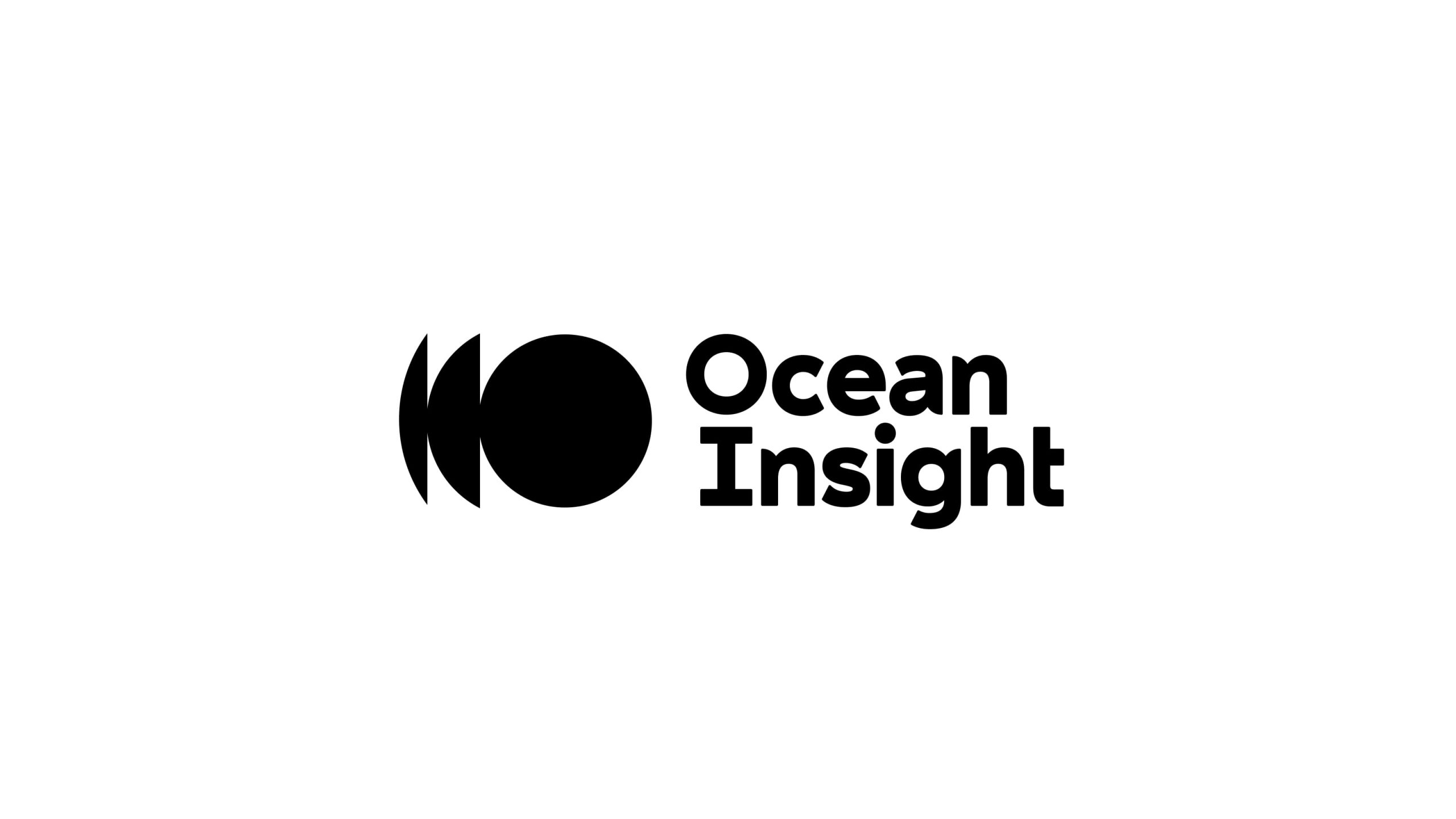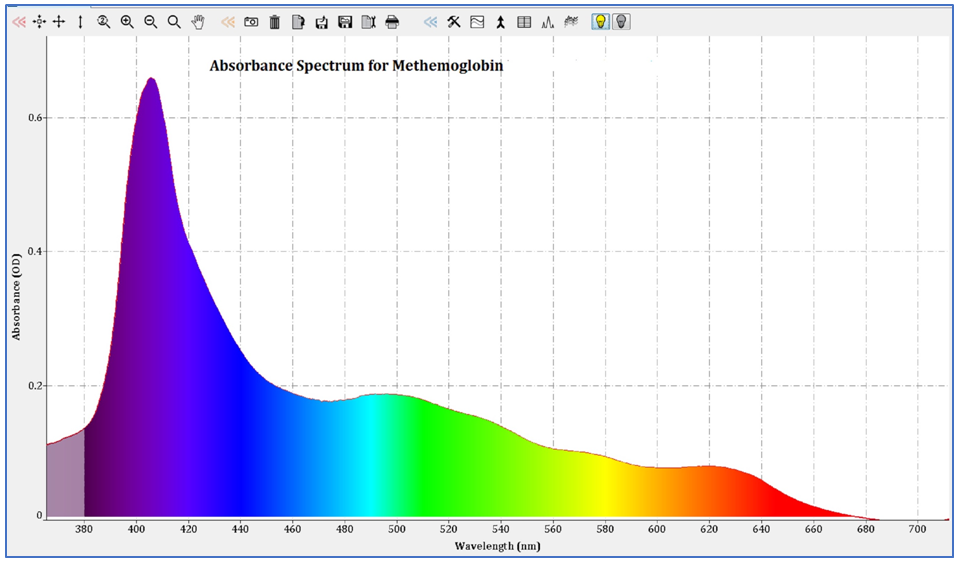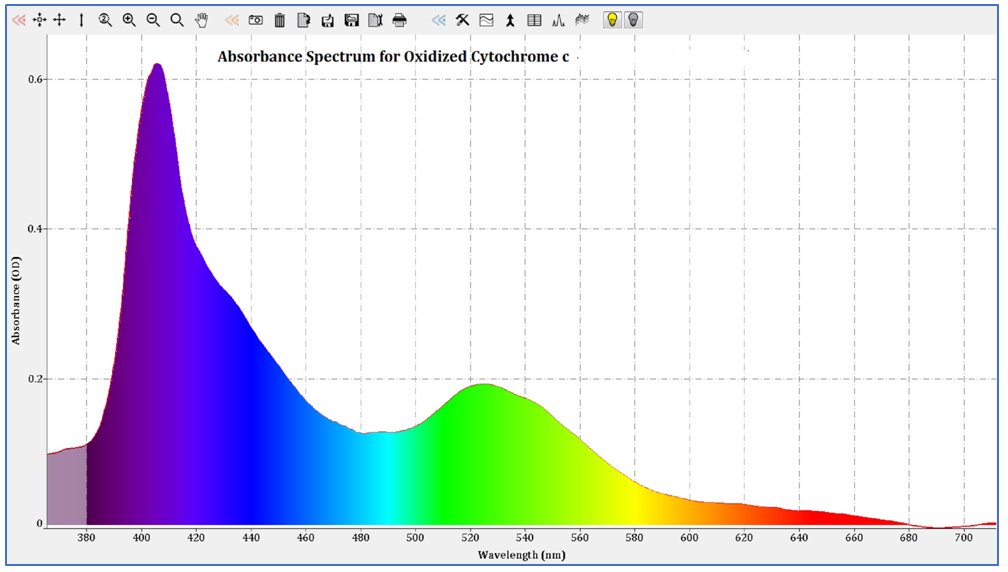By Ocean Insight
Ocean Insight applies spectroscopy to heme protein characterization for biomedical applications
Winter Park, FL: – A research team from applied spectral knowledge company Ocean Insight has succeeded in using UV-Vis spectroscopy to explore the characterization of the heme proteins hemoglobin, myoglobin and cytochrome, which have important functions in mammalian physiology, particularly as carriers of oxygen in the bloodstream.
In a blog post, Ocean Insight Lab Services Manager Yvette Mattley tells how this advance has implications for biomedical applications, with absorbance spectroscopy, particularly in the UV-Vis range, providing a powerful tool to characterize proteins and other life science samples in education, research, clinical laboratory, and medical care settings.
The Heme Proteins
Heme groups bind to proteins and are critical for proteins to carry out their biological functions. Heme proteins have an iron atom at the center of a porphyrin prosthetic group, making them an extremely versatile example of a larger class of metalloproteins that have metal ion cofactors, such as hemoglobin and myoglobin that function to store and transport oxygen in mammalian cells. Another example of a metalloprotein is cytochrome c, which plays a critical role in the electron transport chain to aid in ATP synthesis.
Heme proteins play a vital role in mammal physiology by storing and transport oxygen in the bloodstream and transport electrons in the mitochondria to synthesize high-energy molecules used to drive cellular processes. This is a field of research particularly relevant to study of therapies to treat COVID-19 coronavirus patients, many of whom present with severe hypoxia.
Using spectroscopy to characterize heme proteins
Heme groups generate absorbance bands that vary according to the state of the heme group. Absorbance measurements can be used to study critical protein parameters, particularly protein conformation (structure), and to provide information on the binding and oxidation state of the heme prosthetic group.
The presence of the heme prosthetic group makes UV-Vis spectroscopy a powerful tool for studying heme proteins via their spectral changes. The prosthetic group gives rise to the absorbance spectra, which vary with the state of the heme group.
“Heme proteins may carry up to four oxygen molecules, with the conformation of the protein being different depending on the presence of the oxygen molecule, and the number of bound oxygen molecules. As such, spectroscopy is a useful tool for measuring blood oxygen levels. This is important in a variety of medical applications, including situations where patients are sedated, comatose or otherwise unable to express nausea or faintness, which are common signs of low blood oxygenation,” Yvette Mattley points out.
Experiments and results
The Ocean Insight Lab Services team used UV-Vis spectroscopy to explore the characterization of hemoglobin, myoglobin and cytochrome, whose unique spectra can be measured using absorption spectroscopy in the ultraviolet or visible ranges.
“The original setup for this experiment used a Spark spectral sensor, which has since been retired. The Ocean HDX and Flame spectrometers are current options for these experiments that provide significant advantages in performance, flexibility and stability,” Ms. Mattley explains.
To measure the visible absorbance spectra for hemoglobin (Sigma H-7379), myoglobin (Sigma M-0630), and cytochrome c (Sigma C-3131), solutions of each were prepared in water at a concentration of approximately 1 mg/mL. The samples were diluted as necessary to provide spectra data below 1 AU, then pipetted into disposable cuvettes. Absorbance measurements were taken with integration time set at 3.5 ms, 50 scans to average, and boxcar smoothing width of 10.
Distinctive spectra
The resulting absorbance spectra revealed similarities in the spectral features for each protein resulting from the presence of the heme group.
“Based on the shape of these spectra, which change with the state of the heme group, we can conclude that the iron atom in the heme groups of each protein has been oxidized. Therefore, the spectra are consistent with those of methemoglobin, metmyoglobin and oxidized cytochrome c,” Yvette Mattley writes (see Figures 1 & 2).
“The spectra measured for these proteins would be very different if the iron atom was in a different oxidation state or had another gas bound to it,” she points out.
“Absorbance spectroscopy, particularly in the UV-Vis range, is a powerful tool to characterize proteins and other life science samples, as indicated here by the ability to study the state of the heme group. In the case of metalloproteins, the UV-Vis absorbance spectra provide detailed information about the heme prosthetic group. As heme groups are vital to proteins carrying out their critical biological functions, this technique is useful in education, research, clinical laboratory, and medical care settings,” Yvette Mattley concludes.
About Ocean Insight
Based in Winter Park, Florida, Ocean Insight is a manufacturer specializing in applied spectral knowledge, offering a range of advanced products and solutions that hugely benefit a wide range of industries, including pharmaceuticals, healthcare and life sciences.
Ocean Insight applies its integrated Applied Spectral Knowledge (ASK) approach to combine innovative spectroscopy hardware, software and on-demand data delivery with deep category expertise to create innovative and customized solutions that help clients ‘Unlock the Unknown’.
Main Ocean Insight product areas include spectrometers, light sources, multispectral imaging devices, spectral systems, oxygen sensors, laboratory facilities, machine learning, and software development including Artificial Intelligence (AI).
Ocean Insight is the trading name of Ocean Optics, Inc, which was founded in 1989 by university researchers in Florida to develop a pioneering miniature spectrometer, which was commercially released in 1992. In 2004, Ocean Optics became part of Halma plc, a global group of life-saving technology companies. In 2019, the company was rebranded as Ocean Insight, an applied spectral knowledge company.
Further information at: www.oceaninsight.com
Resources
Click on Using Spectroscopy for Heme Protein Characterization to read original article



















